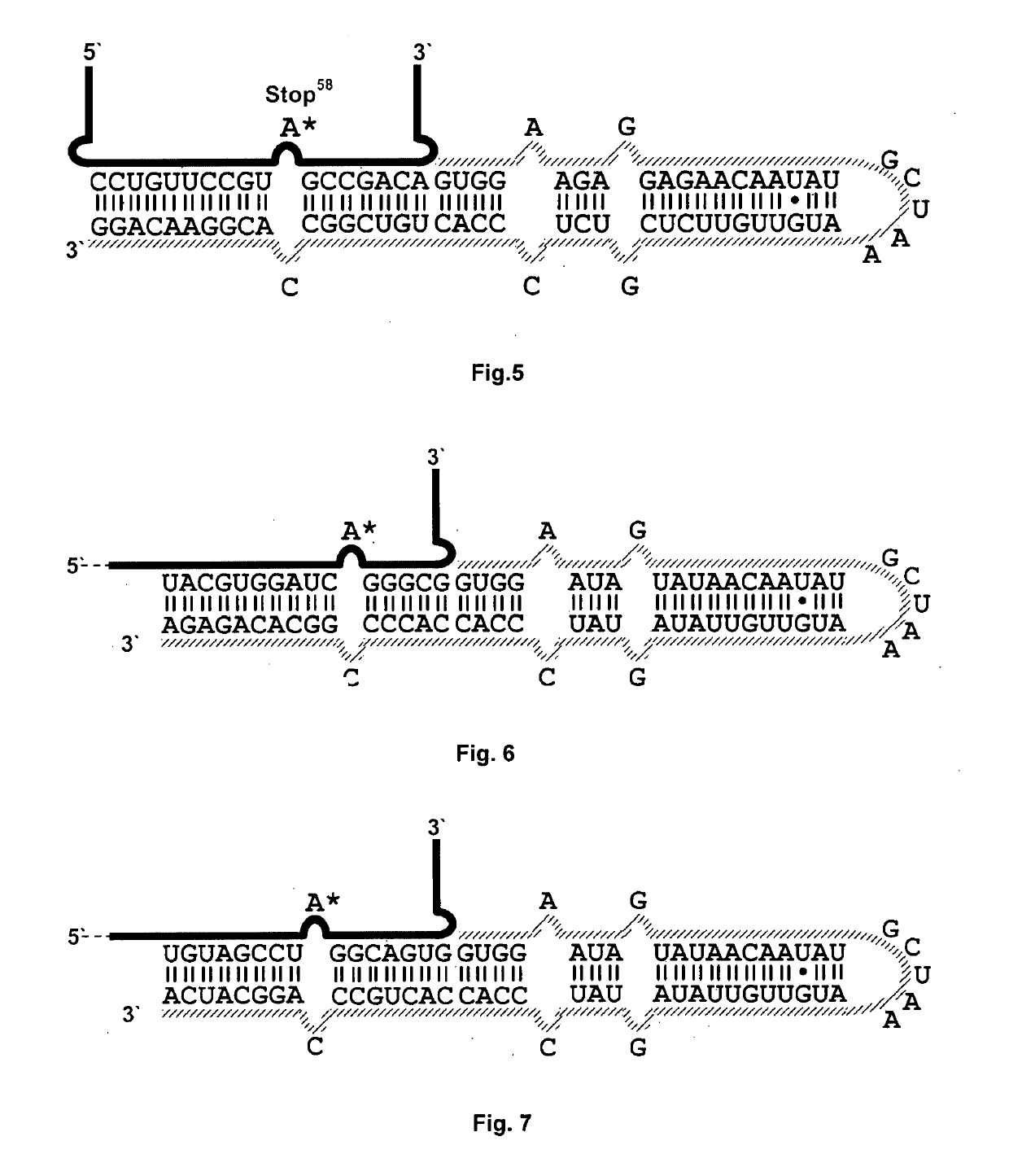Methods and substances for directed RNA editing
- Summary
- Abstract
- Description
- Claims
- Application Information
AI Technical Summary
Benefits of technology
Problems solved by technology
Method used
Image
Examples
Embodiment Construction
[0049]HEK 293T cells were used for transfecting the guide RNA according to the invention. For each experiment, 1.75*10≡cells were prepared in a 24-well plate format on the day prior to the transfection. Plasmids that are specific for human cell lines were used for the experiments. Lipofectamine™ 2000 (Invitrogen) was used as the transfection reagent.
Targeted Editing of W58X Stop Codon in the GFP Gene
[0050]W58X is a mutation in the “TGG” codon and leads to the “TAG” stop codon. The guide RNAs constructed for this exemplary embodiment are illustrated in FIG. 4 and FIG. 5.[0051]a) Standard HEK293T cells as described in the foregoing.[0052]b) HEK293T cells with inducible ADAR2 protein expression (genomically integrated ADAR2). This integrated cell line, in which ADAR2 is induced, has approx. 20-times lower expression of the protein than the cells in the preceding examples, which after transfection each express ADAR2 with 300 ng plasmid. In this example, therefore, the intracellular conc...
PUM
| Property | Measurement | Unit |
|---|---|---|
| Length | aaaaa | aaaaa |
Abstract
Description
Claims
Application Information
 Login to View More
Login to View More - R&D
- Intellectual Property
- Life Sciences
- Materials
- Tech Scout
- Unparalleled Data Quality
- Higher Quality Content
- 60% Fewer Hallucinations
Browse by: Latest US Patents, China's latest patents, Technical Efficacy Thesaurus, Application Domain, Technology Topic, Popular Technical Reports.
© 2025 PatSnap. All rights reserved.Legal|Privacy policy|Modern Slavery Act Transparency Statement|Sitemap|About US| Contact US: help@patsnap.com



